Outdoor grilling is a beloved pastime for many families, combining the pleasure of cooking with the enjoyment of spending time in the great outdoors.
As grill gazebos grow in popularity, providing a dedicated space for this activity, the question of their safety naturally arises. So, are grill gazebos safe?
In this article, we will delve into the safety aspects of grill gazebos, cover the features that make them secure, and offer guidance on how to enhance safety while using them.
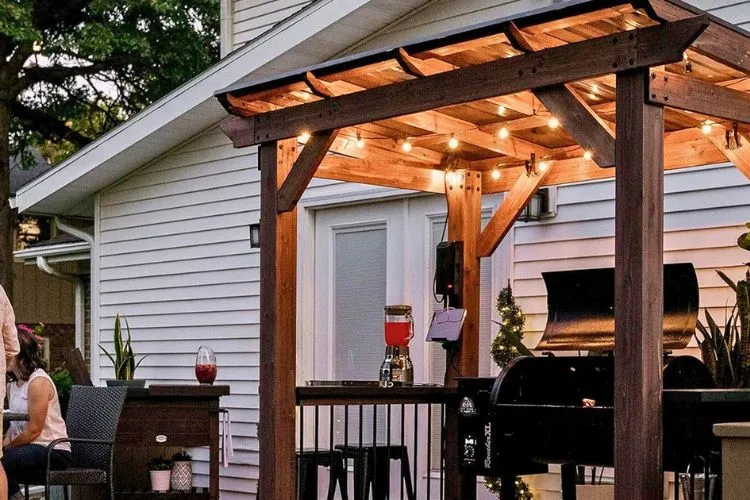
Contents
Understanding Grill Gazebos
A grill gazebo is more than just a shelter; it is a functional addition to any outdoor space, designed explicitly for grilling.
Unlike traditional gazebos with entirely enclosed designs, grill gazebos are tailored to accommodate the specific needs of outdoor cooking, crafted with materials and structures that cater to safety and comfort.
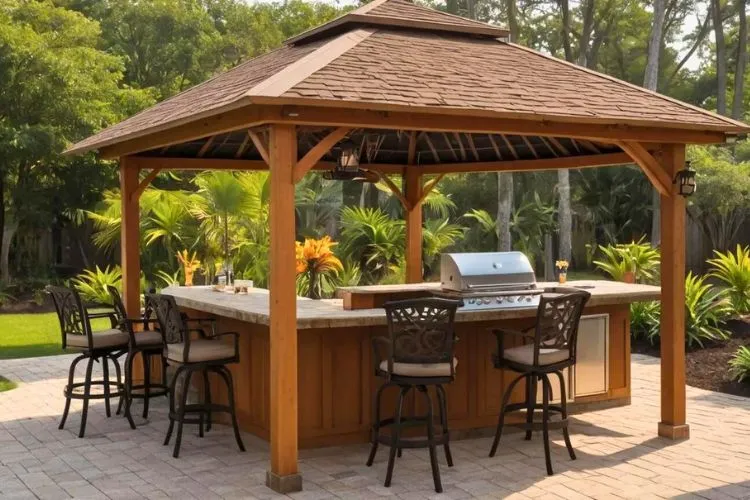
The use of metals such as steel or aluminum for frames and specially treated, fire-resistant fabrics for canopies are common in these outdoor structures.
These materials are chosen for their resilience and ability to withstand high temperatures associated with grilling.
Are Grill Gazebos Safe?
Key to any grill gazebo’s design is its array of safety features. Ventilation is paramount, with many models boasting an open design or ventilation capped roofs to allow smoke and heat to escape freely.
A gazebo canopy is often made with fire-resistant fabric, reducing the risk of fire should hot embers come into contact with it.
Stability is another essential factor, with robust frames and secure anchoring systems ensuring the gazebo remains firmly in place, regardless of weather conditions.
Factors Contributing to Grill Gazebo Safety
When considering the safety of grill gazebos, both the environment around the gazebo and the regularity of maintenance come into play.
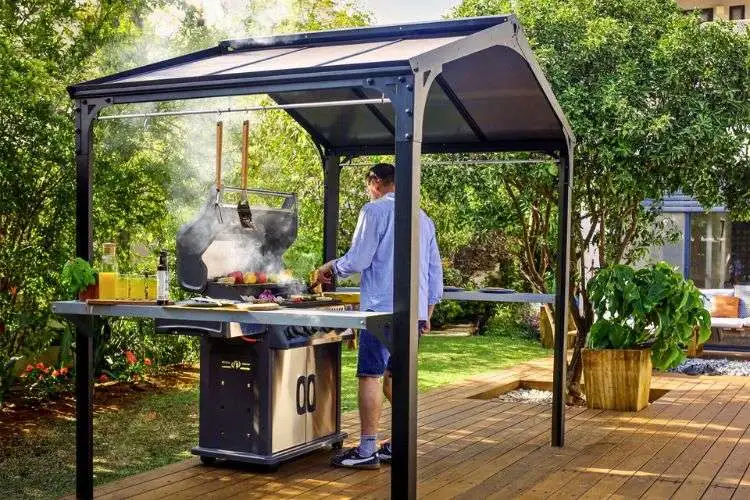
Placement and Installation
Choosing a safe location is the first step, made easier by opting for a flat, open space away from trees and combustible materials. Positioning the gazebo on concrete or patio blocks, rather than directly on grass, can also add to stability and safety.
Installation must be secure, with each gazebo typically equipped with stakes or bolts to ensure it stays grounded, especially in windy conditions.
Maintenance Tips
Consistent maintenance ensures that any potential hazards are mitigated. Canopies should be inspected for any signs of wear or damage, which could compromise their fire-resistant properties.
Structures need to be checked for rust, loose bolts, or any other damage that could lead to structural failure. Regular cleaning is also required, not just for aesthetic purposes, but also to remove grease and debris that could pose a fire risk.
Enhancing Safety While Using a Grill Gazebo
Although grill gazebos are designed with safety in mind, users must still adhere to safe grilling practices. One should never leave the grill unattended when in use and keep children and pets safely away from the cooking area.
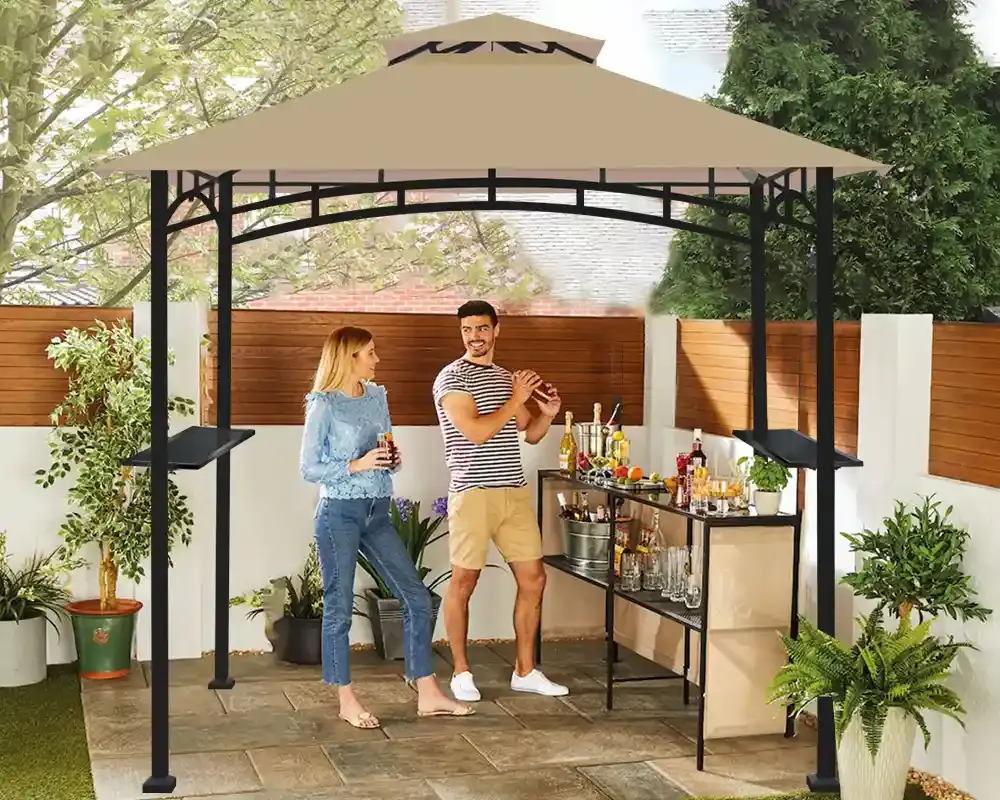
A grill with a proper grease management system is an excellent addition, helping to minimize the chance of dangerous flare-ups.
Having a fire extinguisher on hand, using grill mats to catch spills, and installing smoke detectors within the gazebo can provide additional layers of safety.
Professional Insights
Experts in fire safety and outdoor cooking offer valuable perspectives on grill gazebos. They uniformly stress the importance of proper gazebo maintenance and adherence to safe grilling practices.
The selection of a high-quality grill gazebo, with a focus on reputable manufacturers who prioritize safety features, is another point commonly emphasized by professionals in the field.
You may also find useful: Can Gazebos Be Used in the Rain?
Legal and Insurance Considerations
Before installing a grill gazebo, one must consider any legal regulations that apply. Residential areas may have specific rules governing the construction of outdoor structures and their proximity to property lines.
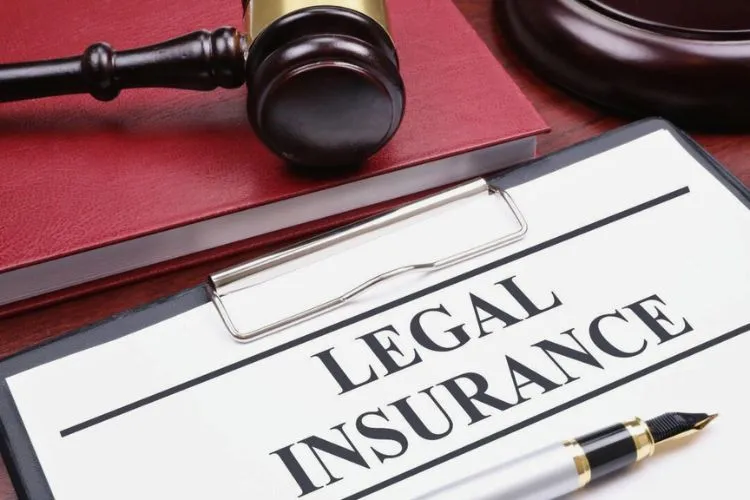
It is equally critical to understand how a grill gazebo fits into one’s homeowner’s insurance policy. Some policies might dictate safety requirements or offer coverage for outdoor cooking structures, so it’s important to review the details with your insurance provider.
Environmental Considerations
The popularity of grill gazebos invites a closer examination of their environmental impact, emphasizing the need for sustainable practices.
Opting for eco-friendly materials is a crucial first step; choosing gazebos made from recycled materials or sustainably sourced wood not only reduces environmental harm but also supports conservation efforts.
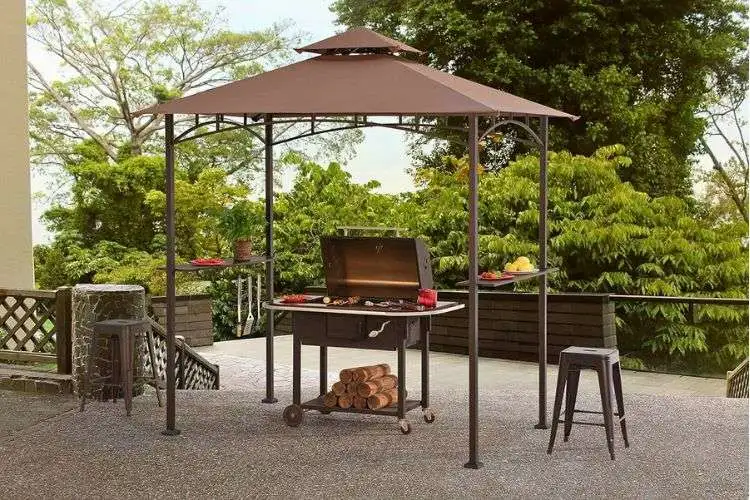
Additionally, the adoption of energy-efficient grills that emit fewer pollutants can markedly lower the carbon footprint of your outdoor cooking activities.
LED lighting for evening grilling is another eco-conscious choice, offering lower energy consumption and a longer lifespan than traditional bulbs. Implementing these measures not only enhances the sustainability of your grill gazebo setup but also sets a positive example for eco-friendly outdoor entertaining.
By prioritizing materials, technologies, and practices that minimize environmental impact, users can enjoy their outdoor culinary pursuits without compromising the health of the planet.
Pro Tips
When selecting a grill gazebo, assess both the quality of materials and the design’s adherence to safety standards.
While the style and aesthetics of a gazebo are important, they should not overshadow the necessity of safety features. The market offers various options that successfully merge safety, functionality, and visual appeal.
Frequently Asked Questions (FAQs)
Can I use any type of grill under a gazebo?
It’s best to use grills designed for outdoor and gazebo use, as they often come with features that take into account the close proximity of fabric or other gazebo materials.
How do I know if a gazebo material is fire-resistant?
Look for labels or manufacturer information that clearly states the fire resistance of the materials used in the construction of the gazebo.
What should I do if my grill gazebo gets damaged?
Assess the damage carefully. If structural integrity or fire resistance is compromised, it might be necessary to replace the damaged parts or the entire gazebo.
Are there specific brands that specialize in safe grill gazebos?
Yes, there are many reputable brands that specialize in outdoor structures with a focus on safety. Conduct thorough research and read reviews before making a purchase.
Can I install a grill gazebo on any type of surface?
It is recommended to install grill gazebos on flat, stable surfaces such as concrete or decking for optimal safety. Avoid uneven ground or flammable surfaces like dry grass.
Conclusion:
Grill gazebos can be safe havens for barbecuing enthusiasts, provided they are wisely chosen, correctly installed, and meticulously maintained.
Safety is not merely a bonus but an integral aspect of these structures, one that extends beyond mere features and into safe usage practices.
With careful planning and adherence to best practices, grill gazebos can contribute to enjoyable and secure outdoor cooking experiences.
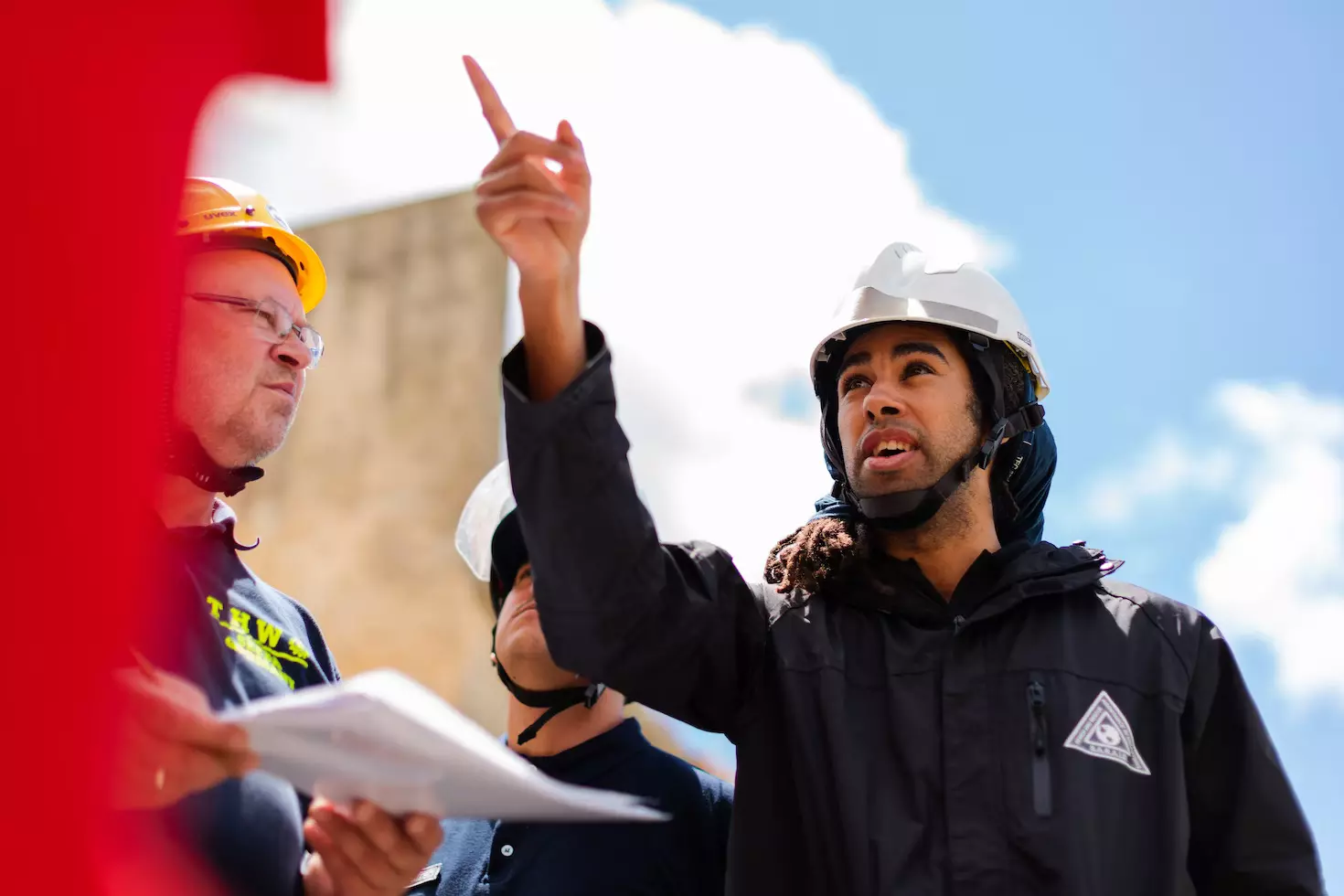
Sergio Gomes, a passionate advocate for outdoor living and the male voice behind Shades Authority. With years of experience, Sergio is your trusted source for expert insights on gazebos, pavilions, cabanas, pergolas, and all things outdoor shade solutions. Join him on a journey to transform your outdoor spaces into stunning, functional retreats
